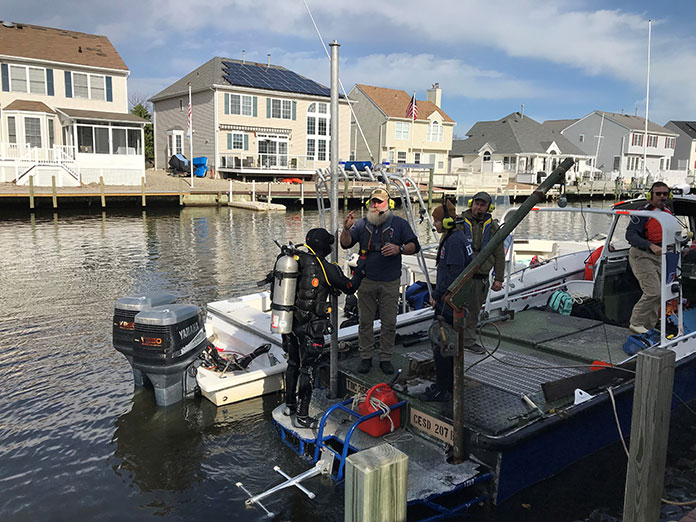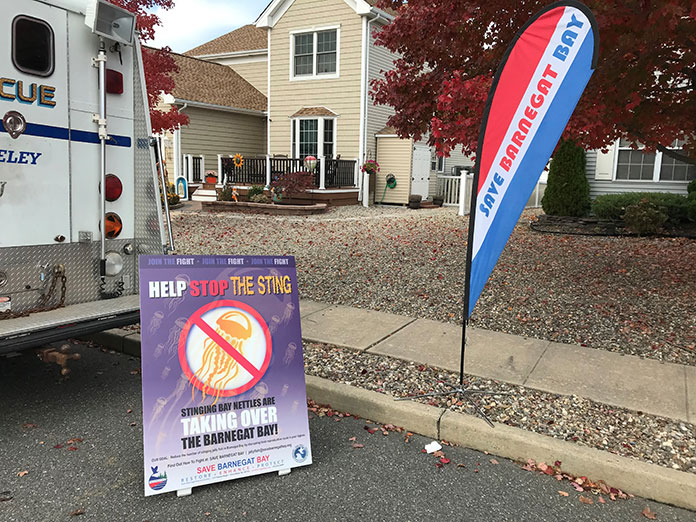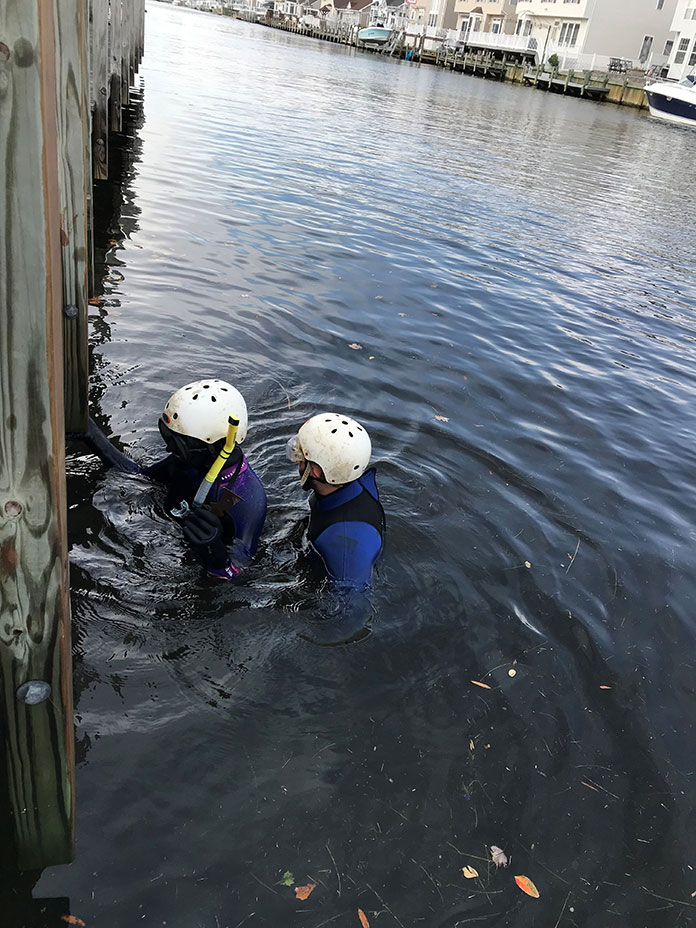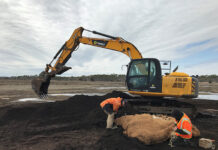
BERKELEY – A new plan might reduce the number of stinging nettles in the Barnegat Bay, and it’s being done for the first time ever in Berkeley Shores.
The idea is to strike at the jellyfish when they’re at their weakest, as they are polyps clinging to bulkheads or other structures. Scraping them off when they’re young means, in theory, that there will be much less adults in the bay the following season.
First, residents in the lagoon areas of Bayville were contacted about being part of the experiment. Then, Dr. Paul Bologna from Montclair State University took swabs of the docks of volunteers. Those with jellyfish DNA on the surface were recorded.
Recently, the Berkeley Underwater Search and Rescue team anchored near these docks. They went into the water and scrubbed the surfaces that were previously determined to have jellyfish DNA on them. The polyps are too small to see, but there can be a great number in a small area.
There was a small crowd in Frank Johnston’s back yard that day. He had volunteered to have his bulkheads be the first one done. The State Department of Environmental Protection, Save Barnegat Bay, dive team members, Mayor Carmen Amato and Councilman John Bacchione were among those in attendance.

GraceAnne Taylor, an educator with Save Barnegat Bay, said they were working together, partially funded with a grant from the DEP. “The lagoons are inundated with stormwater runoff. There’s nitrogen from dog waste and fertilizer,” she said. Add this to an oxygen-depleted environment where the jellyfish’s prey is slowed down and it’s a fertile place for them.
In the colder months, the adults are not in the water as much so it’s the best time to scrub, she said.
The important thing was to clean only the vinyl surfaces that were in the water, she said. The polyps are hardy enough to live on artificial material like this. However, there’s too much competition on natural surfaces like wood. Barnacles and other favorable organisms live there, and the team didn’t want to harm their habitat. But the jellyfish have the vinyl pretty much all to themselves, so that was the target.
That’s also why biologists request that you take in any vinyl at the end of the season. For example, if you have a floating dock that’s made of plastic, you might be inadvertently breeding jellyfish underneath it in the winter months. It’s similar to making sure there’s no standing water in your yard so that mosquitoes don’t breed.
“As many as 100,000 polyps can settle on one floating dock, and each polyp produces multiple bay nettle jellyfish every spring season,” Bologna said.
Carl Mattocks, dive team captain, explained how the crew was using a commercial pressure washer adapted for this purpose.
“We would prefer not to have stinging jellies when we’re diving, especially when there’s zero visibility,” he said. Although the divers are almost completely covered, parts of their faces are vulnerable. “It feels like you’ve just been cut.”
This Stop the Sting campaign is in the early stages of a three-year study, said Brittany McLaughlin, the Jellyfish Education Coordinator at Save Barnegat Bay. Data is being collected before and after the polyp removal to scientifically prove if it worked.
There were 23 homes in Bayville that agreed to do this. If the evidence shows that the scrubbing cut down numbers of adult jellyfish the following season, then the campaign will spread to other towns with lagoons, she said. It could set a precedent for other environmental groups across the nation to follow.

Mayor Amato said he was proud that this was starting in Berkeley. “We strive to be on the cutting edge.”
The town helped get the word out to get more residents on board, he said. That way, there would be a better chance of proving the effectiveness.
“This will be a real benefit to the homeowners,” he said, noting how stinging nettles are a common complaint in the summer. Additionally, this is a way to deal with them without costing taxpayers money.
“If we can find an area where we can prove it works, we can pass this information to every homeowners association across the USA,” said Willie deCamp, Jr., president of Save Barnegat Bay.
The stinging nettles are a symptom of a much larger problem, said Save Barnegat Bay executive director Britta Forsberg. They strive in degraded water quality. So, their strength in numbers shows a weakness in the health of the lagoons. “They are the canary in a coal mine.”






